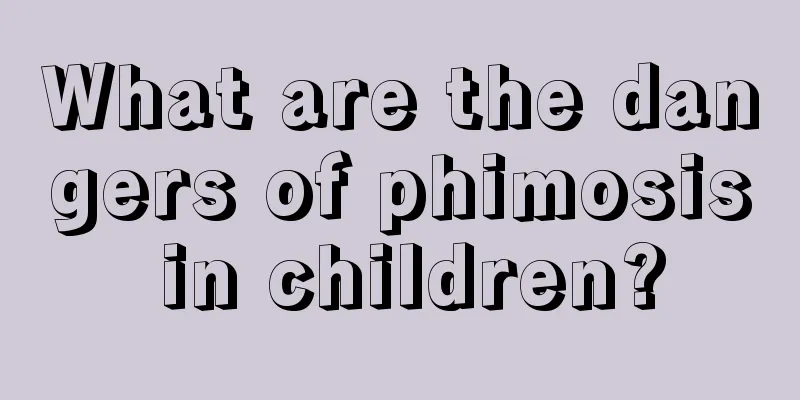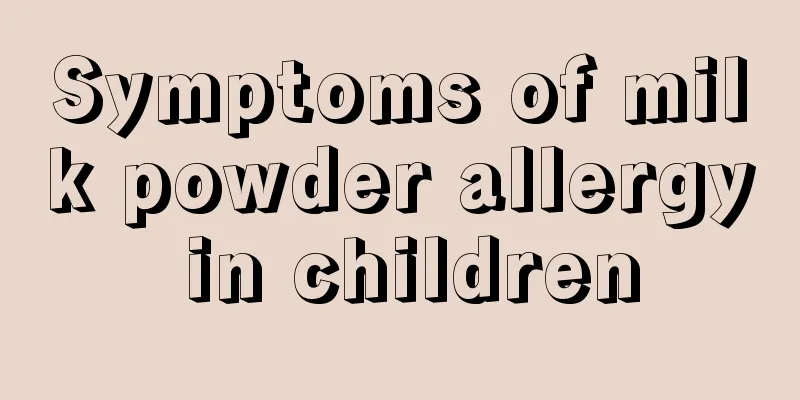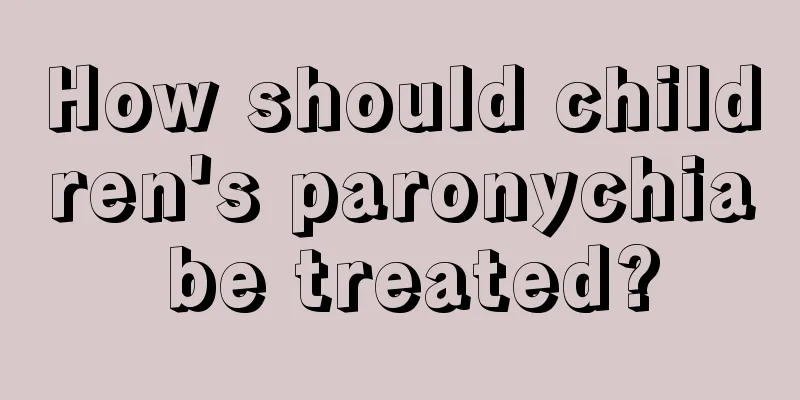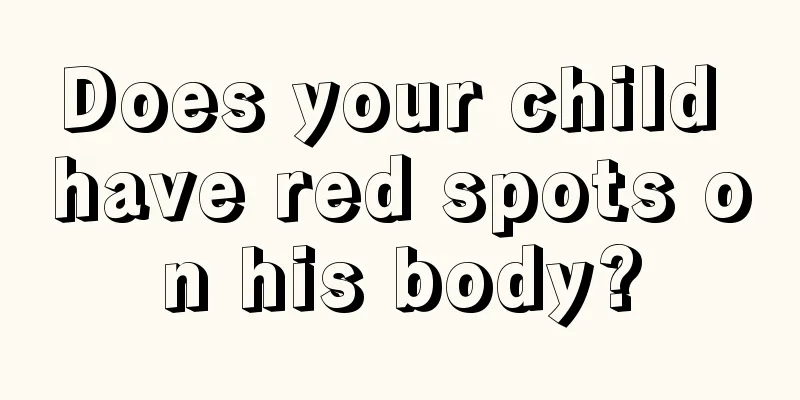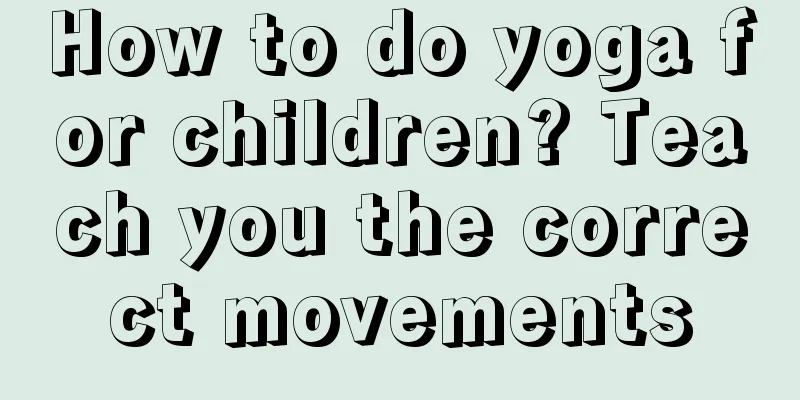What are the symptoms of seasonal allergic rhinitis in children?
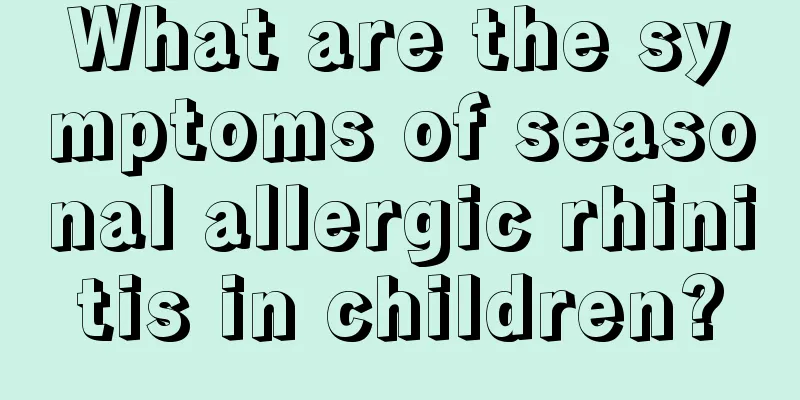
|
Many children will have allergic reactions when the seasons change, especially allergic rhinitis, the incidence of which is still very high. So what are the symptoms of seasonal allergic rhinitis in children? Only by observing the child's specific condition at all times and making careful observations can family members avoid ignoring the existence of the disease and allowing the condition to worsen. Early detection and early treatment can reduce the difficulty of treatment and improve the treatment effect. Children's seasonal allergic rhinitis begins to occur during the pollen spreading season, and the onset season is basically the same every year. This type of rhinitis is called seasonal rhinitis. Seasonal rhinitis is usually seasonal allergic rhinitis, which has a high incidence in the general population. Itchy nose, sneezing, watery nasal discharge and nasal congestion are typical symptoms of seasonal rhinitis. The main cause of seasonal rhinitis is allergy to plant pollen. Therefore, it is also called hay fever or allergic rhinitis. When certain pollens are inhaled into the nose, it can cause symptoms such as nasal mucosal congestion and edema, and examination may reveal eosinophil infiltration. Common symptoms of seasonal allergic rhinitis in children: 1. Nasal itching, sneezing, clear nasal discharge and nasal congestion are typical symptoms of seasonal rhinitis. 2. Mild nasal itching causes a crawling sensation in the nose, while severe cases are unbearable and lead to continuous sneezing, often several or dozens of times in a row, accompanied by a large amount of clear nasal discharge. In severe cases, the nose may run all day long. Nasal congestion may be intermittent or continuous, unilateral or bilateral. Some patients experience decreased or absent sense of smell. 3. Due to nasal congestion, people often involuntarily push the nose tip upwards with their palms to improve the nasal congestion. Over time, a horizontal line can be seen on the skin of the back of the nose. Due to nasal congestion, people need to open their mouths to breathe, and may develop a "dementia"-like face over a long period of time. In addition, nasal congestion can cause obstruction of facial venous return, pigmentation of the skin of the lower eyelids on both sides, and formation of dark circles. 4. Seasonal rhinitis may also be accompanied by general discomfort, such as fatigue, heaviness in the head, etc. 5. Seasonal rhinitis may cause complications such as sinusitis, otitis media, nasal polyps, and bronchial asthma if not treated in time. Through the above introduction, everyone has a clear understanding of the symptoms of seasonal allergic rhinitis in children. Children are still young and the development of various parts of their bodies is not yet mature. Once they are threatened by disease, they must be treated seriously and their daily lives must be adjusted to protect their health from harm. |
<<: What should I do if my child always refuses to eat?
>>: What are the treatments for allergic rhinitis in children?
Recommend
Causes of puffy eyelids in children
Swollen eyelids are a symptom that we are all ver...
Why are the newborn's legs shaking?
It is quite common for newborns to have trembling...
Will myolysis heal on its own?
There is a disease that you may not be familiar w...
Why does my baby's urine smell so bad?
Baby's urine is often called boy's urine....
What are the secrets of dressing your baby in winter?
Everyone has different choices of clothing in win...
Causes and treatments for children's bloating
Young mothers will be filled with love and smiles...
Are hand, foot and mouth disease scabs still contagious?
Many parents do not know how long the hand, foot ...
What to do if blisters appear on children's hands
If a child develops blisters on his hands, take h...
What are the early symptoms of cerebral palsy in children?
Cerebral palsy in children is one of the most com...
8 month old baby's daily milk intake
Babies grow very fast. In the blink of an eye, he...
Baby pulling nipple
In the process of early care for the baby, the ba...
Sequelae of hypoxia in infants' brain
Every child is the treasure of the family, so we ...
Symptoms of gastroesophageal reflux in children
Gastroesophageal reflux disease in children mainl...
Is it good for children to eat fungus?
It has to be said that fungus is a food that has ...
Reasons why babies clench their teeth while sleeping
In daily life, mothers often find that their babi...
